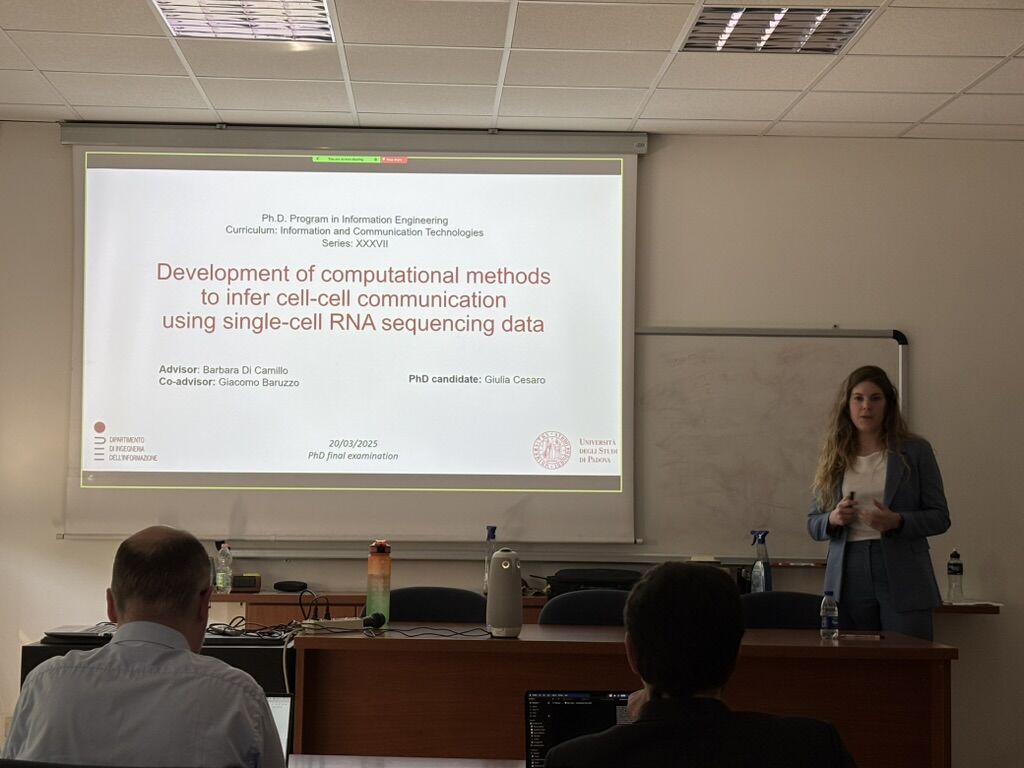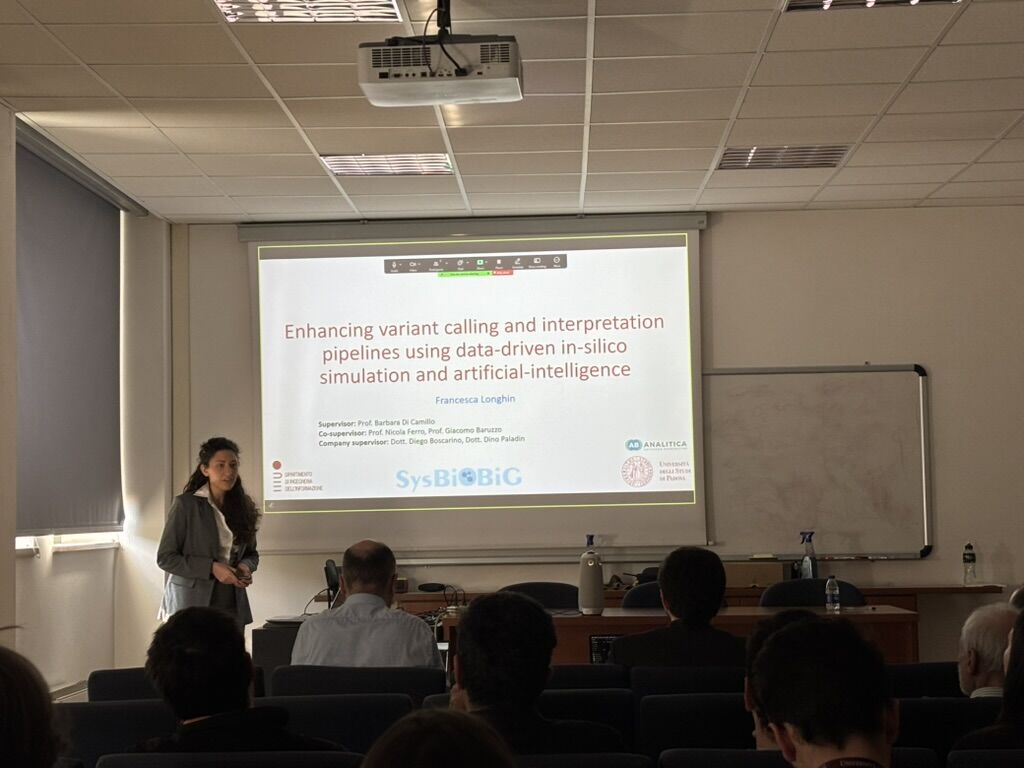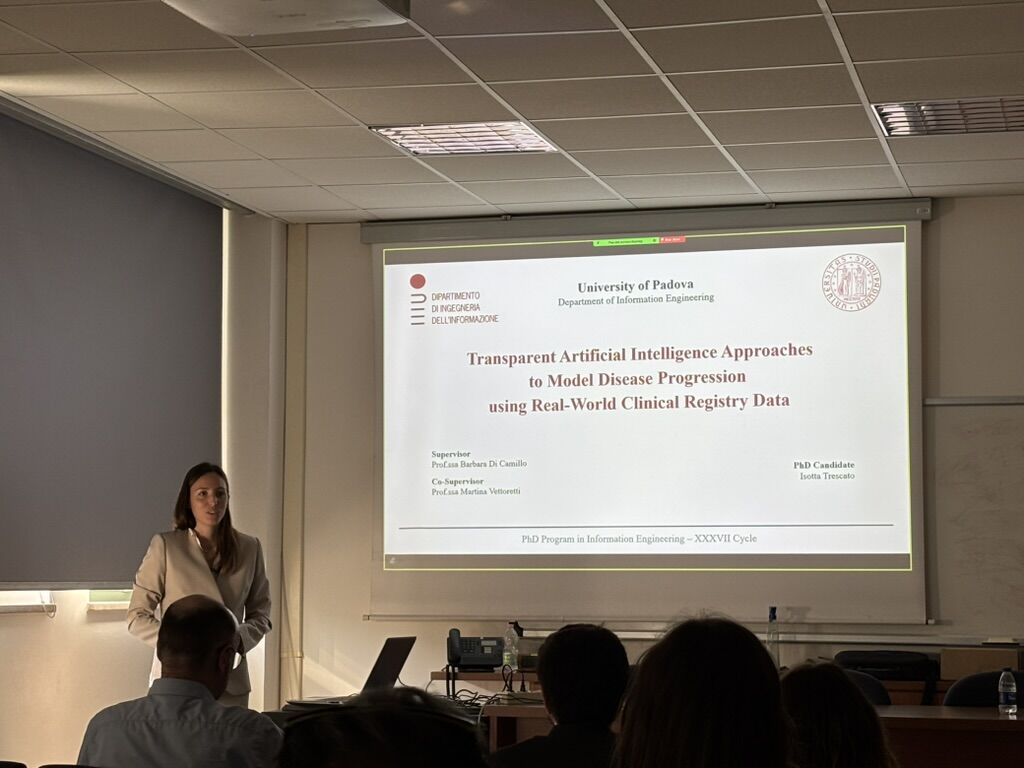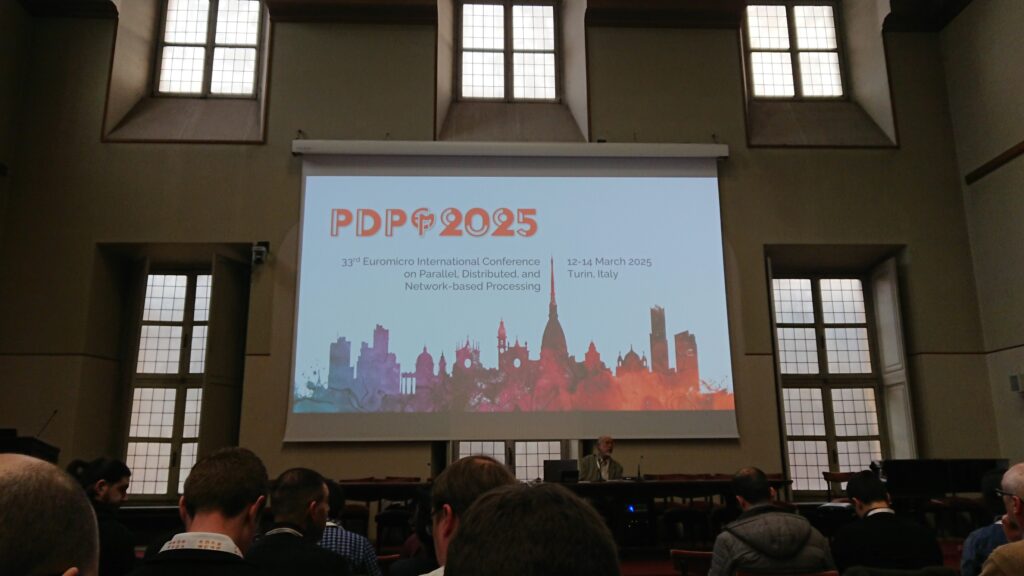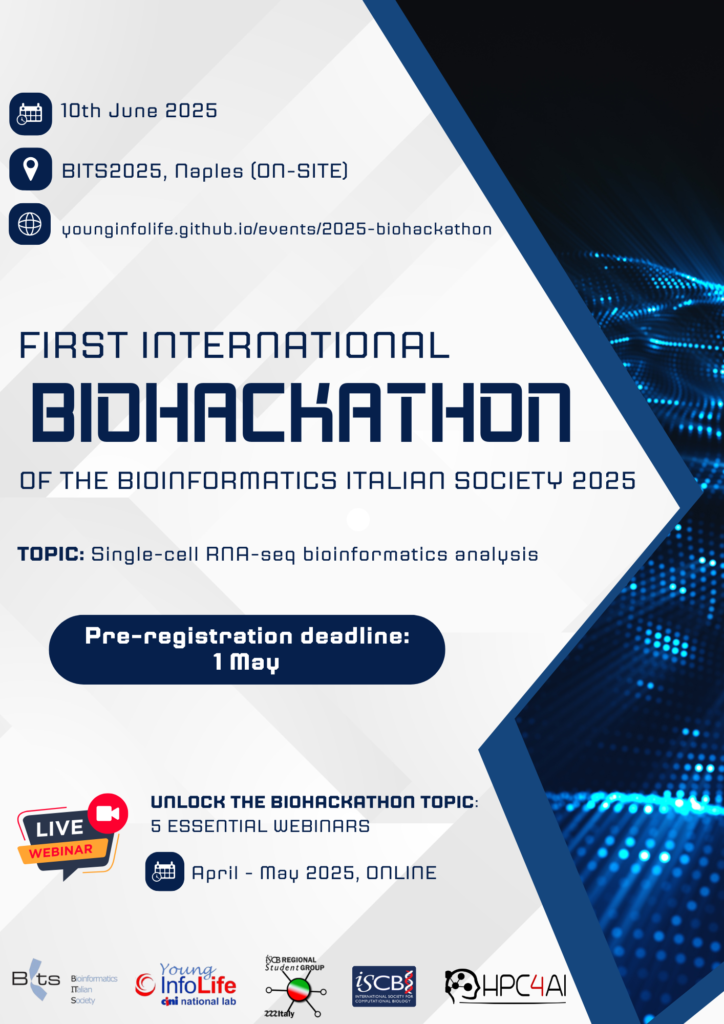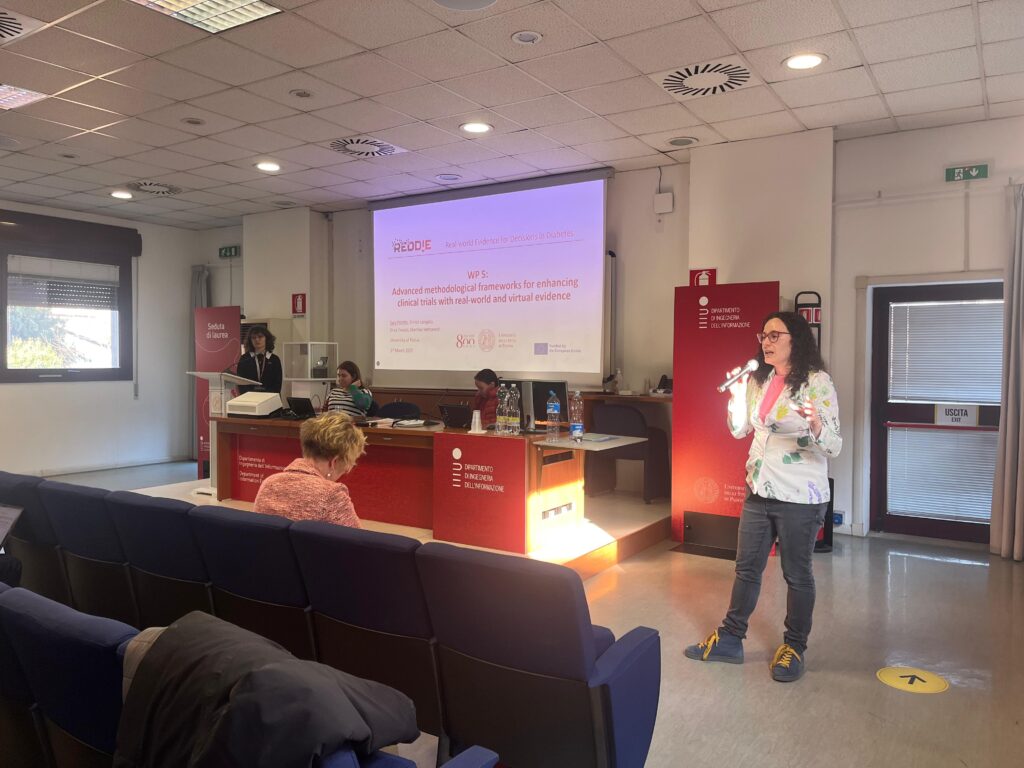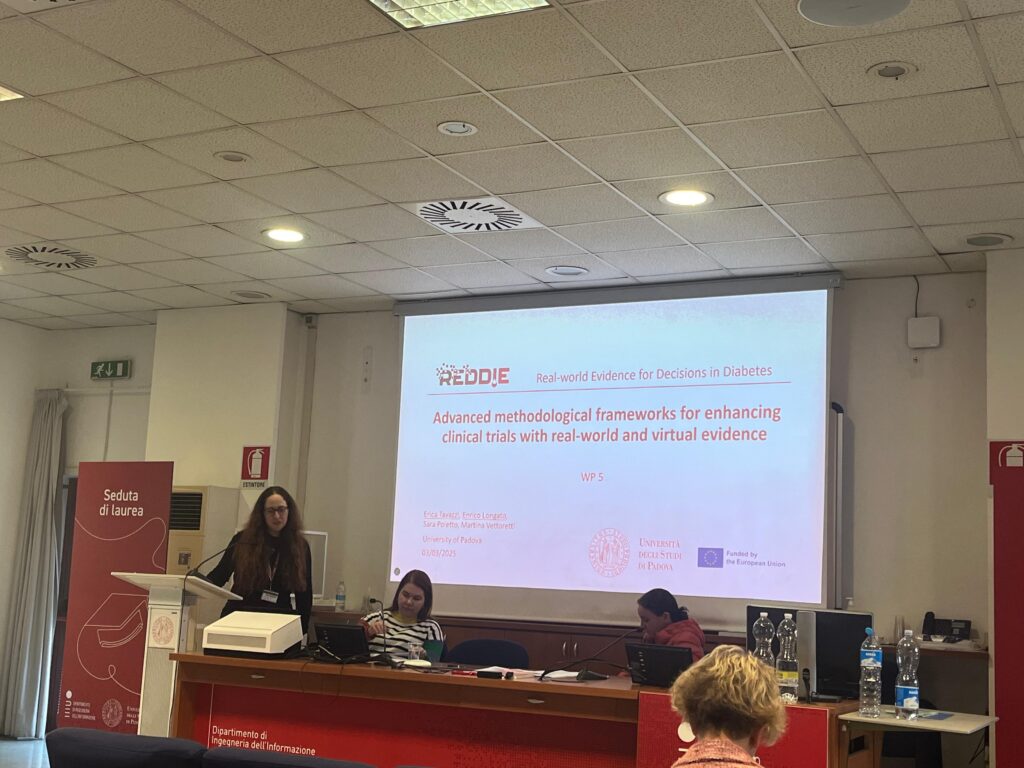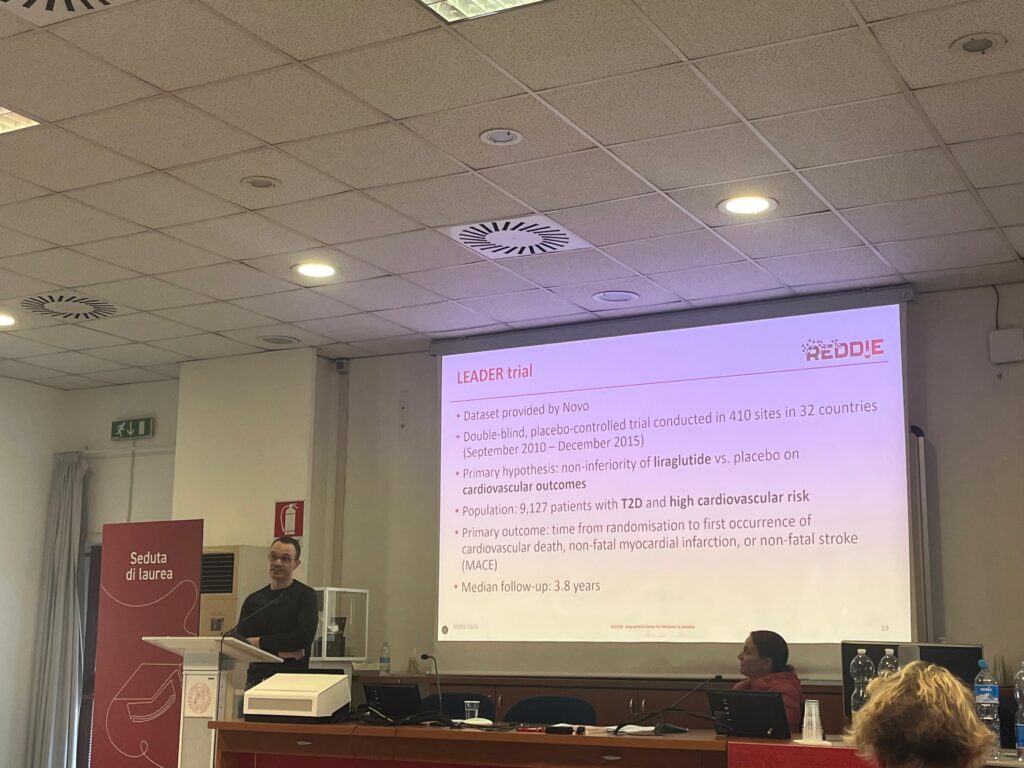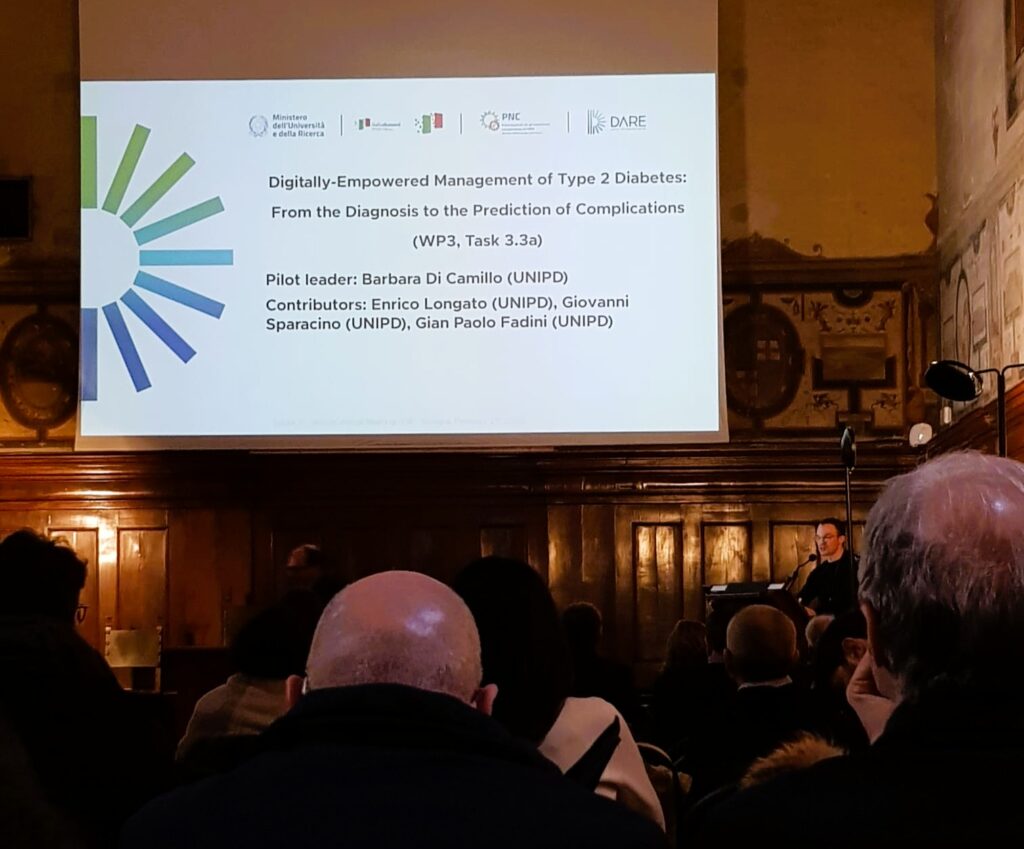Last week, our group attended the 23rd International Conference on Artificial Intelligence in Medicine (AIME 2025) in Pavia, Italy.
It was a fantastic opportunity to follow high-quality presentations and engage with leading researchers and professionals from across the AI and healthcare communities.
We are proud to share that we contributed to the scientific program with four research papers:
- Davide Dei Cas held a short oral presentation entitled “Exploring the Use of Projecting Conflicting Gradients in Multi-Task Neural Networks with an Application to Amyotrophic Lateral Sclerosis.”
- Erica Tavazzi co-authored the poster “Towards Distributed Process Discovery in Healthcare: Testing and Proving the Feasibility of the Federated Alpha+ Algorithm.”
- At the 2nd International Workshop on Process Mining Applications for Healthcare (PM4H 2025), our group was also involved in two contributions: “Predicting Next Clinical Event in Amyotrophic Lateral Sclerosis using Process-Oriented Machine Learning Models: a Case Study” and “Federated I-PALIA: Privacy-By-Design Distributed Process Discovery for Duplicated Activities in Healthcare” (🏆Best Paper Award – PM4H 2025).
We sincerely thank the conference organizers for hosting this event and for giving us the opportunity to share our research.



